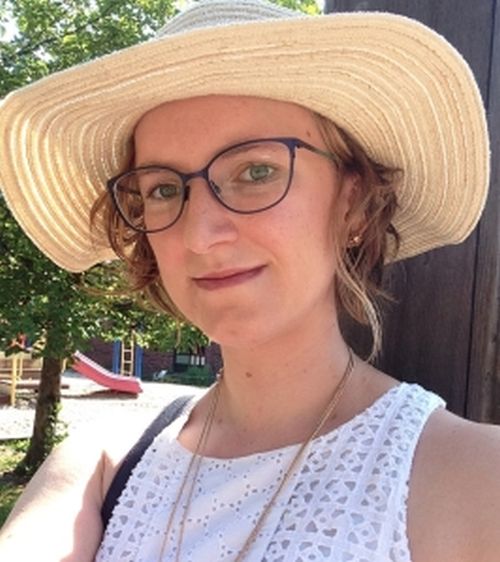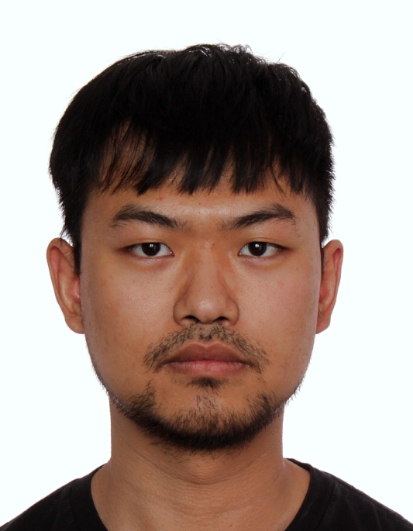
Dr. Kamber Schwarz is a postdoc at MPIA in Heidelberg. She has been a NASA Sagan Postdoctoral Fellow in the Lunar and Planetary Laboratory at the University of Arizona. She received her PhD in Astronomy & Astrophysics from the University of Michigan in 2018. She is also the recipient of the prestigious Ralph B. Baldwin Prize in Astronomy, 2020.
The evolution of volatile gas during planet formation is her area of interest in astronomy. Recently, she hit headlines with her research on planet formation in the protoplanetary disk around the star GM Aurigae.
She has not only been a Graduate Student Instructor but also Guest Lecturer at Planetary Sciences. She has authored nearly 6 papers on Protoplanetary Disks and co-authored numerous publications in astronomy.
I have been following her research and contacted her for an interview to which she agreed even during her hectic hours of work. So, without much ado, please find Dr. Kamber Schwarz herself answering questions on astronomy and of course her life:
Can you first of all tell us when and how you became enamoured with Astronomy?
I grew up in a rural area with low light pollution and beautiful night skies. Around the age of eleven I looked up and realised that I knew next to nothing about space. I decided to fix that. I’ve been learning about space ever since.
Is the formation of planets a by-product of the birth of stars?
Yes. When a cloud of gas and dust collapses to form a star some of the material has too much angular momentum to go directly onto the star and forms a disk instead. Based on the number of exoplanet detections we think that most, if not all, of these disks go on to form planets.
“Search for planets begins with a search for infrared radiation from the material required to make them”, can you please elaborate on this statement?
While we have other methods for finding fully formed exoplanets, studying the material from which planets form requires looking at radiation at infrared or millimeter wavelengths. This is because planets form in relatively cold environments, tens to a few hundred degrees C above absolute zero. In general, cooler objects emit light at longer wavelengths. This is true both for the small grains of dust and for the gaseous molecules. By observing protoplanetary disks in the infrared and millimeter we can determine the composition of planet forming material just before it becomes a planet.
How do temperature differences in the protoplanetary disk explain the arrangement of the planets in the solar system?
Far from the Sun, where the disk was very cold, you get the formation of ice rich comets. Additionally, in the solar system the terrestrial planets are all closer to the Sun than the gas giants. We think this is because of the water snow line: the location in the disk inside of which water is in the gas and outside of which water is in the ice. The basic idea is that water ice is easier to incorporate into planets, so comets and the gas giants are water rich while the terrestrial planets formed in a region with no ice so are both smaller than gas giants and water poor. However, exoplanet systems don’t appear to follow the same trend. We are still debating how important the water snow line is for planet formation.

If planets can’t be detected around a star, can their existence be inferred by studying the host star?
Sometimes! There is a technique called astrometry, where a star’s position is measured to high precision over a period of time. If the star appears to wobble, it is because of the gravitational pull of an unseen companion, like a massive planet or brown dwarf, on the star. My favourite method of inferring the existence of planets is by studying a class of object called polluted white dwarfs. White dwarfs are the exposed hot cores of stars that have reached the end of their lifetimes. The spectra of polluted white dwarfs, basically the chemical imprint in the light they emit, include elements not found in white dwarf atmospheres, such as silicon and magnesium. So not only do we know rocky bodies have fallen into the white dwarf and polluted it’s atmosphere, we also know the composition of these rocks!
The Universe is infinite, so, you think there is other intelligent life that exists somewhere within it?
Given the gargantuan number of stars and planets in the Universe I think it’s likely. However, given the huge distances involved (it takes over four years for light from the Sun to reach the next closest star) I don’t think we will ever get to communicate with aliens.
Do you think our 3-dimensional world is a part/embedded in some higher dimension?
This gets into a branch of physics I don’t have any training in. I’ll say no, but only because any higher dimensions don’t affect my life or my work.
Someone comes up to you and says, “I wanna be just like you. I want to be an Astrophysicist”. What advice would you give?
Learn computer programming. The majority of modern astrophysics takes place on computers. A solid understanding of how-to code is a huge advantage.

Quick bits:
What is your favourite movie quote?
“Dang it, Jim. I’m an astronomer, not a doctor! I mean, I am a doctor, but I’m not that kind of doctor. I have a doctorate, it’s not the same thing.” – Treasure Planet
If you were a superhero what would your powers be?
Teleportation! I love visiting new places but don’t enjoy the process of getting there.
What would you do on Mars for fun?
Low gravity rock climbing!
What will your TED Talk be 10 years from now?
It will be about how working reasonable hours and resting on the weekends makes researchers both more productive and happier.
What books should I read in 2021?
We may never get to talk to aliens in real life, but I find Becky Chamber’s Wayfarer Series an entertaining and thoughtful take on interacting with alien cultures. I’m reading the final instalment right now!
That was indeed an awesome interview. I can’t thank you enough Dr. Schwarz. Your work is truly an inspiration. We look forward to visit you again and see more of your innovative research. Till then, we wish you all the very best for your future endeavor.



